08/12: Rio Celeste Hike
Category: General
Posted by: The Agnew Family
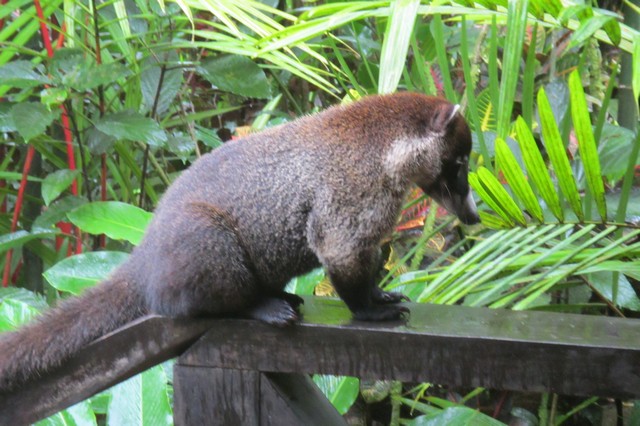
Today's breakfast visitor is a Coati.
Today we have a choice of hiking in the Tenorio National Park or going on a rafting (float) tour. Ed and I enjoy hiking so opted for the hike while the rest of the group opted for rafting. The rafting consisted of a 2 hour bus ride to the river, a 2 hour float on the river, an hour for lunch then a 2 hour bus ride back to the hotel. Our hike consisted of a 1 1/2 km walk from the hotel to the national park and a 7 km hike in the park with a guide. This morning we wondered if we had made the correct choice when we heard the rain pounding on the roof of our casita.
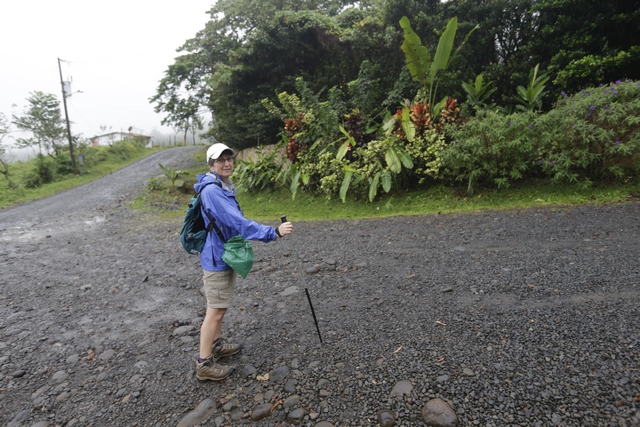
We met our guide in the lobby at 8 am and started off optimistically as the rain had stopped. Along the road we saw a Broad Winged Hawk, several Crested Guan, a sloth and several other birds. Our guide was actually quite pleased with the number of birds we saw. It didn't take long for the rain to come once we started our hike in the park. Luckily Ed and I know we won't melt in the rain so our main concern is keeping cameras and lenses dry --- the cameras are water resistant so that actually wasn't a big deal either.
Disclaimer: Today is overcast, foggy, and rainy thus the river is not as blue as it can be.
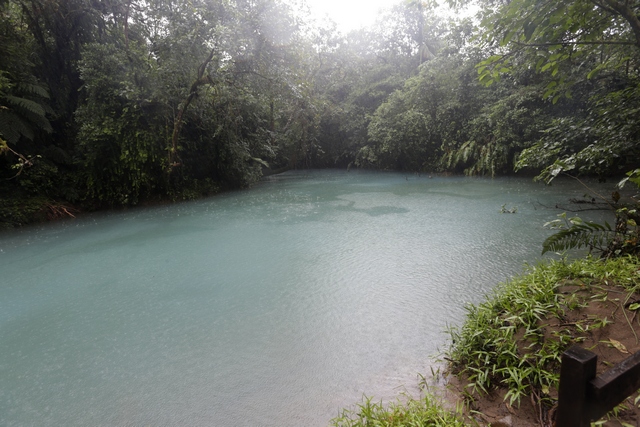
Rio Celeste or "light blue river" is a beautiful turquoise. According to researchers, most of the rocks on the river’s bottom are covered by a substance composed of aluminosilicates – a combination of aluminum, silicon and oxygen – that are capable of absorbing all colors, except blue, present in sunlight. The rejected blue rays of sunlight create a visual sensation in the human eye of “blue water.”
Río Celeste’s bed is formed by waters from two completely transparent rivers: Quebrada Agría and Buena Vista. At the junction of these two rivers, Río Celeste’s water turns turquoise along its 14 kilometers.
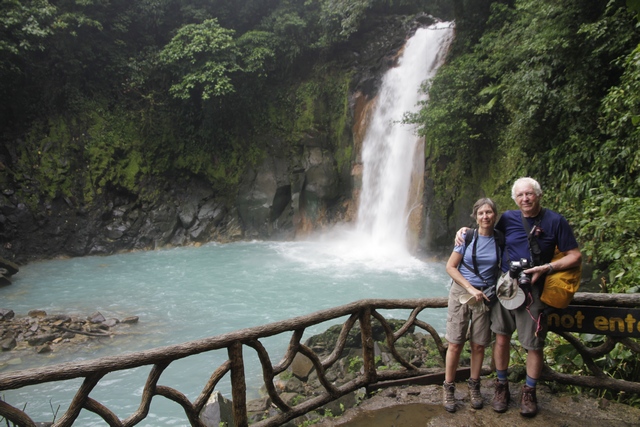
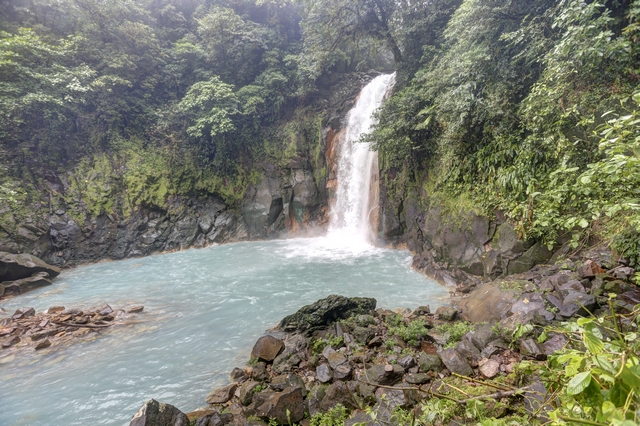
Along the route we was a waterfall. I'll have to try is at other waterfalls --- our guide told us to stare at the water cascading down for 20 seconds then quickly look at the rocks --- the rocks look they are moving up and down.
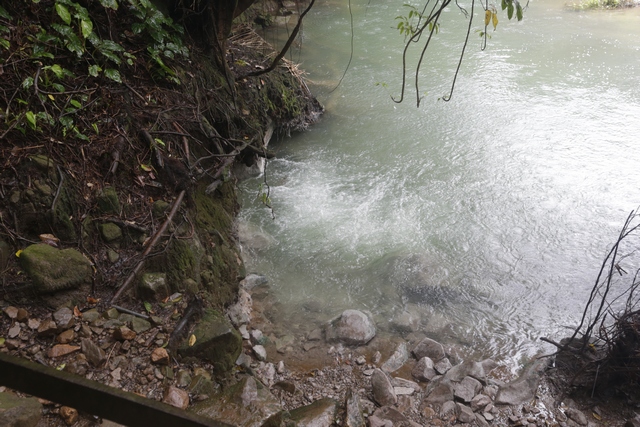
As we are hiking on the side of a volcano there are hot springs and sure enough we saw one. The guide said the water is not too hot --- just above body temperature. Years ago you could swim in the river but today it is no longer allowed.
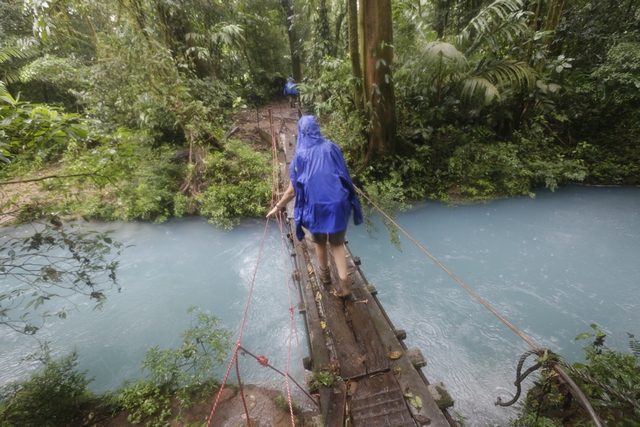
There were a couple of small suspension bridges to cross. It wasn't too made as only one person was allowed to cross at a time.
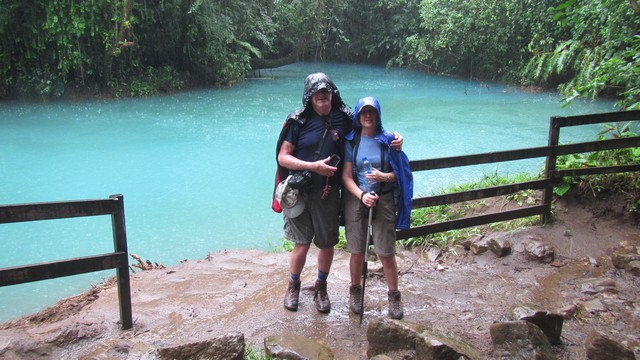
At times the rain stopped but at other times it came down pretty hard.
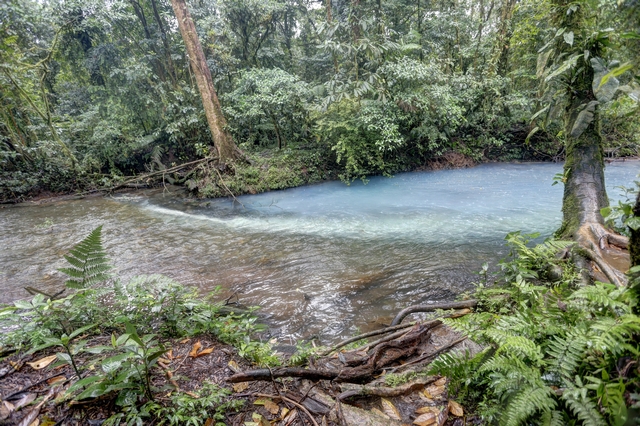
We also saw the spot where the rivers mix. One river comes from the left side of the photo and the 2nd river comes from behind the tree. The white line is where the reaction occurs and our guide said that when they use to swim in the river they'd try to stay on the white line as it was the warmest water.
Our guide was trained as a naturalist. Not only did he tell us about the river but he also told us about the local flora and fauna. We ate some leaves, smelled other ones, looked for flowers, counted the number of plants growing on a small area of a tree and examined different types of fungus. Even though it was soggy we had a lot of fun and even learned a few things.
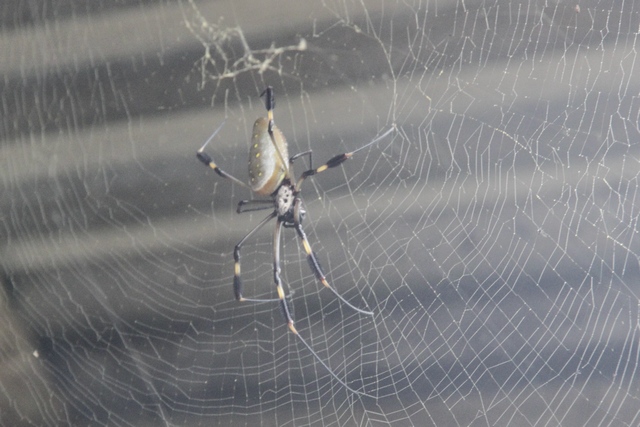
Several spiders and a
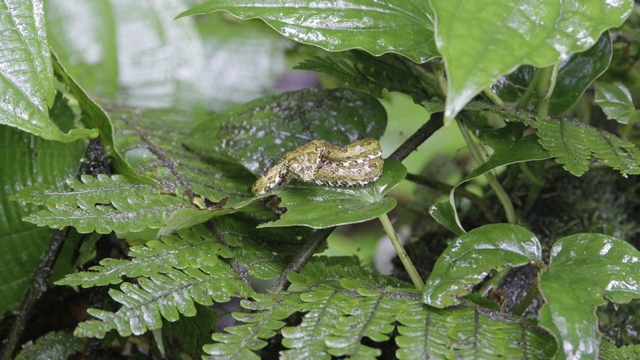
viper were the most exciting wildlife we saw in the park.
The group that went rafting saw first hand the devastation the houses and forest where Hurricane Otto hit. They said they couldn't believe the amount of mud or how high the river had risen.
Back at the hotel and when there was a break in the rain, we sat in the hot tub and took a walk around the grounds and on the nature trail.
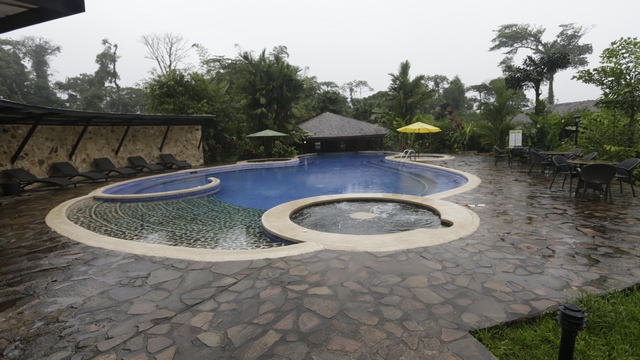
The pool area
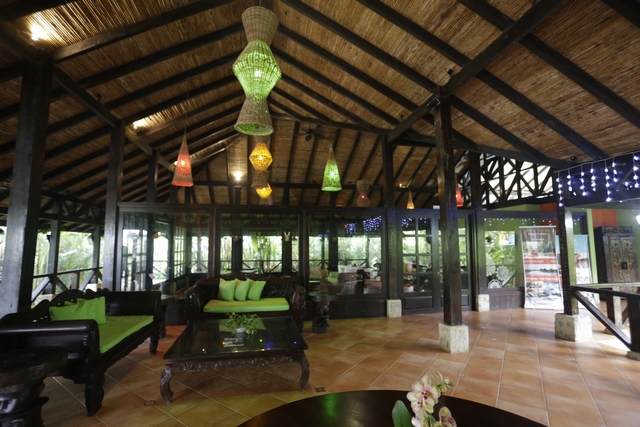
and the lobby.